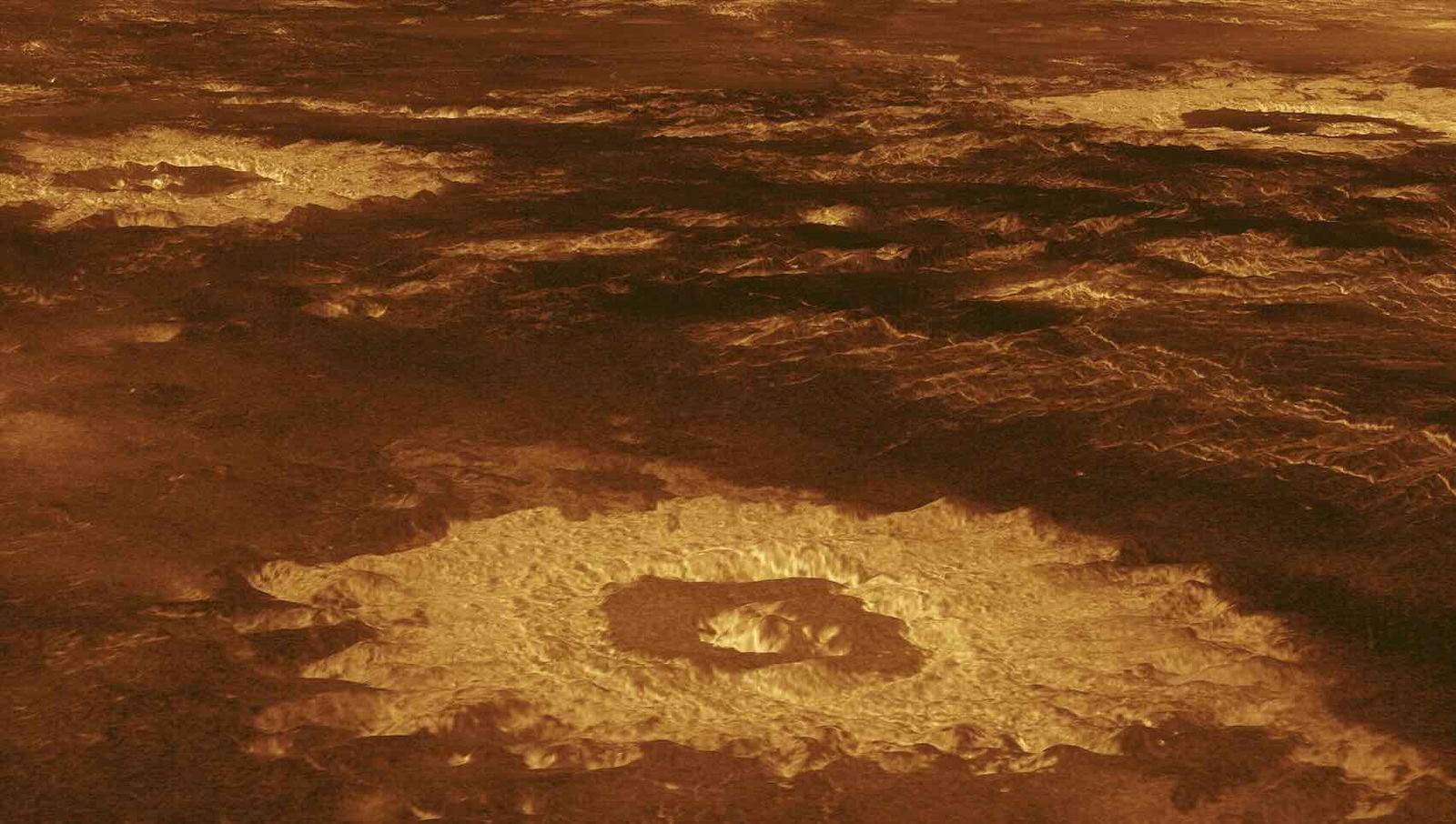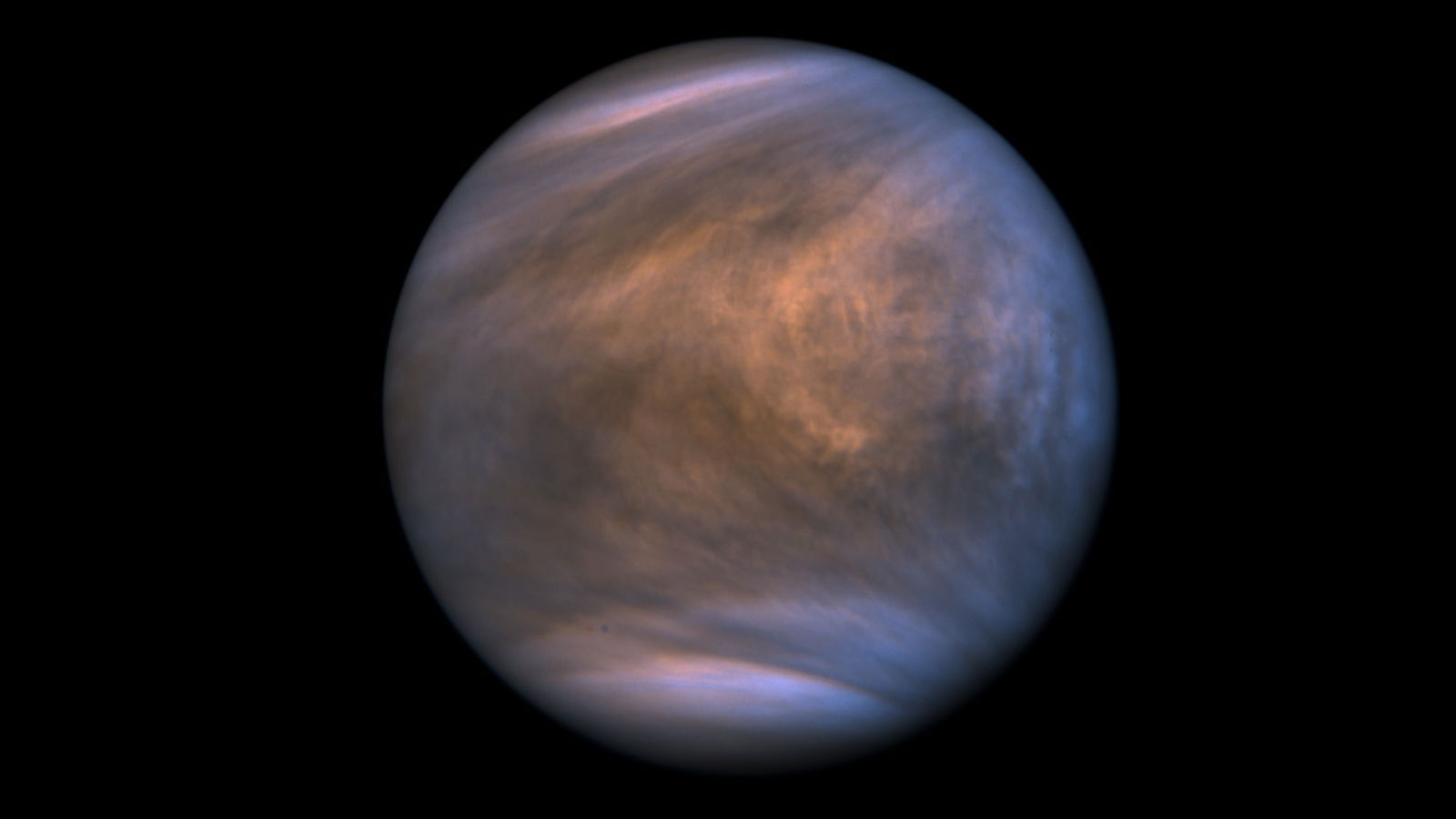Recent observations of Venus have yielded new evidence of a compound in its atmosphere that could indicate the presence of life, according to findings that potentially lend weight to controversial past discoveries.
Phosphine, a toxic gas that astrobiologists have proposed could be associated with the presence of life on rocky planets, was initially detected in Venus’s atmosphere in a surprise discovery four years ago. Now, new observations potentially strengthen those past findings, hinting at the presence of biosignatures that, if confirmed, could mean life forms are able to thrive in the planet’s harsh environment.
A Controversial Discovery on Venus
The initial detection of phosphine in Venus’s oxidized atmosphere was reported in September 2020, when a team of scientists led by Jane Greaves of Cardiff University said they had found evidence of the toxic molecule. The discovery initially led to debate over the possibility that life could exist on Venus, since phosphine is normally associated with organisms that thrive in low-oxygen environments.
The team’s announcement received considerable media attention, and also led to controversy that culminated in rebukes from some in the scientific community. Arguably, the sharpest criticism was leveled by the organizing committee of the International Astronomical Union (IAU) Commission F3 on Astrobiology, who even questioned the ethics of Greaves and her team over the manner in which the discovery was revealed.
“It is an ethical duty for any scientist to communicate with the media and the public with great scientific rigour and to be careful not to overstate any interpretation which will be irretrievably picked up by the press,” the commission wrote in an official statement released at the time.
The commission added it “would like to remind the relevant researchers that we need to understand how the press and the media behave before communicating with them.”
Initial follow-up attempts to detect the compound again were unsuccessful. However, last year, Greaves and her team succeeded in detecting phosphine in deeper portions of the planet’s atmosphere during observations made with the James Clark Maxwell Telescope (JCMT) at Mauna Kea Observatory, Hawaii. Additional detections with NASA’s Stratospheric Observatory for Infrared Astronomy (SOFIA) also suggested the presence of phosphine, which may originate either within or from below the clouds on Venus.


Intriguingly, a separate research effort led by Rakesh Mogul with California State Polytechnic University reanalyzed data obtained by NASA’s Pioneer Venus Large Probe in 1978, revealing additional support for the presence of phosphine in the planet’s atmosphere that appeared to match the earlier findings.
“To date, our analyses remain unchallenged in the literature,” Mogul said of his team’s findings, which he characterized as being “in sharp contrast to the telescopic observations” made by Greaves and her colleagues, which Mogul said “remain controversial.”
New Findings Still Warrant Caution
With the aid of a new receiver installed on the James Clerk Maxwell Telescope, Greaves and her colleagues now say they have collected as much as 140 times more data than previous observations yielded, which include additional detections of phosphine. The new findings were revealed in a pair of presentations by Greaves and David Clements, a researcher at Imperial College London who was involved with the discovery, on July 17 during a meeting of the Royal Astronomical Society.
However, of even greater potential interest in the search for possible life forms on Venus is evidence that ammonia is present in its atmosphere, which Clements has called “more significant than the discovery of phosphine.” Notably, the 2021 study by Mogul and his colleagues also determined that ammonia could potentially exist in Venus’s atmosphere.
Despite the potential significance of the discovery, during Greaves’s talk at the Society’s meeting earlier this month, a slide in her presentation emphasized that there are “many significant unknowns about the Venusian surface and atmosphere,” adding that “even a ‘gold standard’ discovery of two bio-associated molecules is not evidence that life is extant!”
Similarly, Clements told CNN that it would be premature to speculate that these gases point to the existence of life on Venus, although he conceded that the presence of ammonia along with phosphine certainly strengthens that possibility.
Promising Preliminary Findings
While cautioning against premature conclusions, Greaves explained during her presentation this month that there is at least a possibility that any organisms present on Venus could produce ammonia to help reduce the environment’s acidity and thereby make it more habitable. If this were the case, Greaves and her colleagues speculate that the gas could have potentially risen into the atmosphere, allowing its detection.
“The ammonia was detected in the upper clouds, where temperatures are -15°C or less and it is likely too cold for life to exist,” read a posting on the official X account of the Royal Astronomical Society summarizing Greave’s presentation.
“Researchers want to see if the molecule is also present deeper in Venus’s clouds, where it is much warmer,” it added.
The Venus session gets even more exciting! @jgreaves6 from Cardiff University reveals that as well as phosphine, a second potential biomarker gas – ammonia – has been tentatively detected in the clouds of Venus.
Again, it’s important to stress these are preliminary findings. pic.twitter.com/pxptIkTzxF
— Royal Astronomical Society (@RoyalAstroSoc) July 17, 2024
Going forward, additional corroboration will be required, which might be obtained in one of several ways. One possibility includes data that could be collected by NASA’s Deep Atmosphere Venus Investigation of Noble gases, Chemistry, and Imaging (DAVINCI) mission, which will dispatch a probe into Venus’s harsh environment to measure its atmosphere in 2029.
Another potential chance to take measurements of the planet’s atmosphere could be afforded by the European Space Agency’s Jupiter Icy Moons Explorer, which will pass close to Venus next year and is equipped with instruments that could potentially obtain useful data that may complement the findings by Greaves and her colleagues.
Until that data is obtained, however, the new findings remain inconclusive, albeit promising.
“Again, it’s important to stress these are preliminary findings,” the Society said in its posting on X.
Micah Hanks is the Editor-in-Chief and Co-Founder of The Debrief. He can be reached by email at micah@thedebrief.org. Follow his work at micahhanks.com and on X: @MicahHanks.

